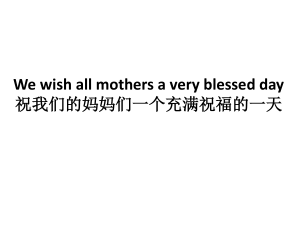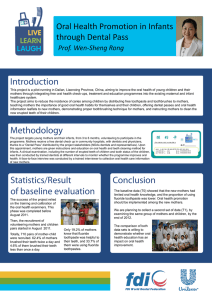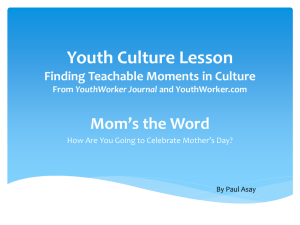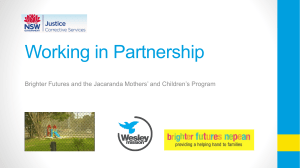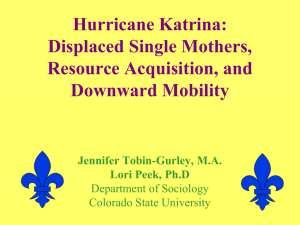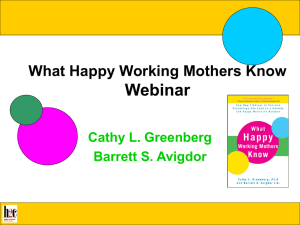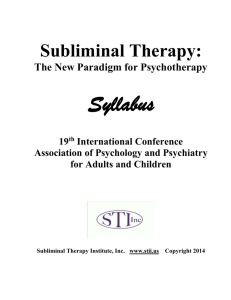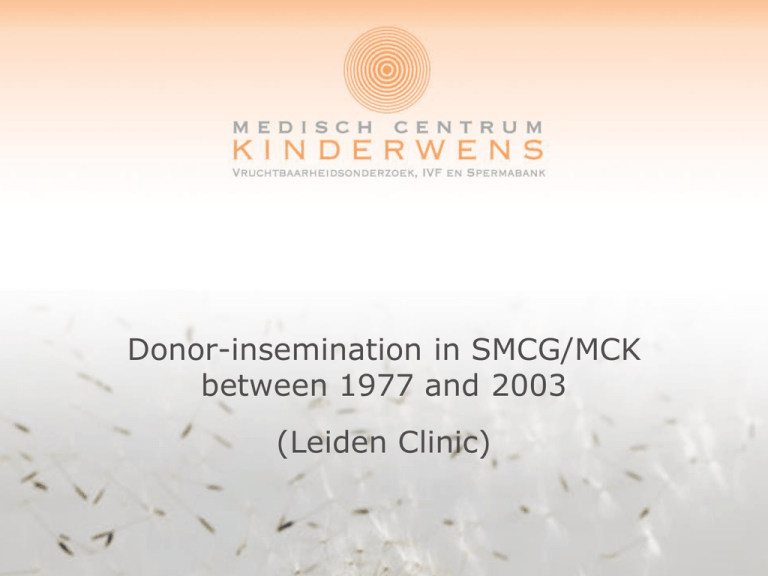
Donor-insemination in SMCG/MCK
between 1977 and 2003
(Leiden Clinic)
DI in the Netherlands:
it is time to produce data!
• How did our population of women asking for DI
change in the 1977 – 2003 time-frame;
• What data do we have about the mothers and the
children born in this period;
• The donors during this time frame, did they react
on the discussions in society about anonymity?
Medisch Centrum Kinderwens
Acceptance of D.I in the
mid- seventies
• First reports on DI in 1948 (Levie)
• DI for non-married women is to be
rejected (Resolution KNMG, 1962)
• DI for women in an infertile relationship
could be tolerated under strict conditions
• ‘In 1960 in the NL, 90% of all
gynaecologists opposed DI as treatment
for infertility, in 1970 40% of them still did
so’ (Hoogerzeil, 1985).
Medisch Centrum Kinderwens
Conditional acceptance
• Non-disclosure about the way of conception from the
parents to the child was the prevailing norm.
Anonymity until infinity of the donor is the logical
consequence.
• In his 1975 publication for dutch practitioners, Levie
elaborated on contra indications for DI.
He wrote: … ‘we think that knowledge by any person
outside the directly involved medical team about the
intention to have DI is a contra-indication to start DI
treatment.’
Medisch Centrum Kinderwens
DI in NL :
the ‘seventies’ and early ‘eighties’
• In 1985 Hoogerzeil writes:’… in the DI
program of the AZUA the question of
confidentiality was always left for the
couple to decide’.
• At the start of the DI clinic in Leiden
Single women and Lesbian couples were
welcome from the start in 1977 :
confidentiallity has a different perspective
in such treatments…
Medisch Centrum Kinderwens
Heritage of Leiden clinic to
MCK fertility centre
Digitalize
old patient
files into
pdf
documents
per patient
Determine
type of
data of
interest for
the
database
Go through
every
single
patient pdf
file to
search the
data of
interest
Type the
data in the
database
Medisch Centrum Kinderwens
Control of
the quality
of the data
(
inconsisten
t inputs etc)
Analyze
the data
Content of the database
Women DI
• Date of
treatment
• Date of birth
• Type of
relationship
• Indication
• Rankno of
pregnancy
• Singleton or
multiple
• Contact
Children
•
•
•
•
Date of birth
Health
Male or female
Contact
Donors
•
•
•
•
•
•
Date of intake
Date of birth
‘A’ or ‘B’
Own children
Spermdata
Linked to
pregnancies
• Other data like
smoking, alcohol
etc
• Contact
Children born after treatment
between 1977 - 2003
• Women : 1105 pregnancies leading to a first
birth of at least one child;
• 273 women had two successive births, 26 had
three births, in 1 case was even a fourth birth
• In total 1365 singletons, 47 twins and 2 triplets,
adding up to 1465 children.
• From these 1465 we could record the sex of
1431 children (98%). This is the group under
study in this presentation.
DI from 1977 and 2003 : 3 periods
• 1977 - 1984, anonymity and secrecy,
insemination partly with fresh sperm and several
inseminations per cycle
• 1985 - 1993,
discussions on anonymity and
secrecy are opened; insemination mainly with
cryopreserved sperm, introduction of IVF.
• 1994 – 2003,
introduction of ICSI (!), trend to
voluntary non-anonymous donors, TV-publicity and
discussions on secrecy, bill on regulated artificial
fertilization passed in june 2002 and became the Law.
3 groups of mothers
• Mothers in a heterosexual relationship;
indication: infertility problem, other;
Mothers in a lesbian relationship;
• Single mothers
Children and their mother’s
relationships in 3 periods
period
Infertility
2 women
Single women
total
1977-1984
337
66
56
459
1985-1992
283
101
91
475
1993-2003
110
187
200
497
Characteristics of mothers during three periods
Donors , intake 1976 and 2003
Involved in birth of
children
Used in inseminations
but no births
Only intake or not used
246
79
>200
Nr families per donor
Nr of children per
donor
Guidelines
1105/246 = 4,5
1465/246 = 6,0
25 CBO, 1992
246 donors involved in pregnancies
Anonym (A)
Not Anonym (B) Comment
Status at intake
216
30
Change from A B
24
Fixation of A status
4
In or after 1993
Reversal of B
(BA)
2
Around 2002
Result at this
moment
194
From 1977 upto 2003
Mainly in or after 1993
52
Requests for non identifying
donor information
Requests of mothers for non-ID info
(‘donor pasport’), after birth;
Requests of children;
• Mother and child come with a request
• Only the child comes with a request
• Only the mother comes with a request
Requests by mothers and children
(infertility group)
Requests by mothers and children
(single mothers)
Medisch Centrum Kinderwens
Comparison of 2 groups of mothers
Medisch Centrum Kinderwens
Sex of the children who ask
• 72 children who requested donor information
• 30 were male, 42 were female
• Are girls more inclined to search for this
information?
Conclusions about disclosure ?
- In the oldest group of children with a social father
(29 - 36 yrs) only 4% of the children make a request
themselves;
- In the youngest group (10 – 19 yrs) many more
mothers (20% vs 7%) make a request for a
‘donor pasport’ than in the oldest group;
- In general mothers are much more active in this
respect than children;
- In the group without a social father 20 – 30% of
the children request for donor info..
General conclusions on DI between
1977 and 2003
• DI became an accepted treatment mode for infertility and
unvolontary childlessness in the Netherlands;
• Also lesbian relationships and single women as candidates
for DI became widely accepted;
• The landscape in relation to the DI candidates changed
drastically :
- the ‘classical’ infertility cases now logically prefer IVF or
ICSI, if needed in combination with PESA or TESE.
- a limited group of severe azoospermia still remains
indicated.
- single women and lesbian couples are a large group in DI
programs
Symposium MCK 2013
Special Thanks
• Erica de Reus
• Anne Brewaeys
Medisch Centrum Kinderwens
Thanks to many colleagues and staff
members from Leiden Clinic
•
Willem Beekhuizen
•
Kees van Schie
•
Hanna Bonink
•
Renske v.d. Baan
•
E. Tellegen
•
J. van de Noort
•
Carla van Gerwen
•
Mirjam Denteneer
•
Maria Noboa
•
Elly van der Kwaak
•
Ingrid Heijnsbroek
•
Lies ter Haar
•
Gerda van Niekerk
•
Jacqueline Heemskerk
•
Maureen Roos
•
Present secretarial staff MCK
•
Present medical staff MCK
•
Present laboratory staff MCK



